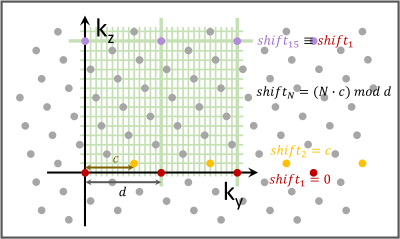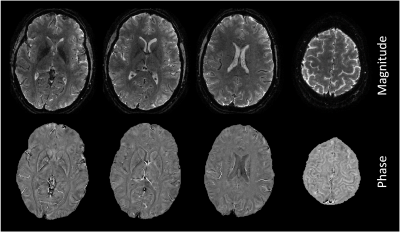Maria Engel1, Lars Kasper1, and Klaas Prüssmann1
1Institute for Biomedical Engineering, ETH Zurich, Zurich, Switzerland
1Institute for Biomedical Engineering, ETH Zurich, Zurich, Switzerland
In this work, we show high-resolution stacks
of EPIs on a tilted hexagonal grid. The scheme provides flexibility in
balancing readout and scan time, thereby allowing for high-quality images in a
temporal resolution regime suitable for fMRI. 0.7 mm whole-brain coverage is
achieved in below 5s.

Example of mono-planar T-Hex scheme. Red and yellow dots mark
those points of the hexagonal grid which are covered by two subsequent shots. Green
lines in the background show that all points of the hexagonal grid lie on nodes
of a finer, rectilinear lattice, from which the shift in the 1st
phase-encoding (PE) direction of each EPI shot can be derived. Subsequent shots
exhibit multiples of the initial shift c, modulo the PE step size d. This shift
also determines the necessary echo-time shift ΔTEN = shiftN/d · TAQline, where
TAQline denotes the acquisition time of
one k-space line.

